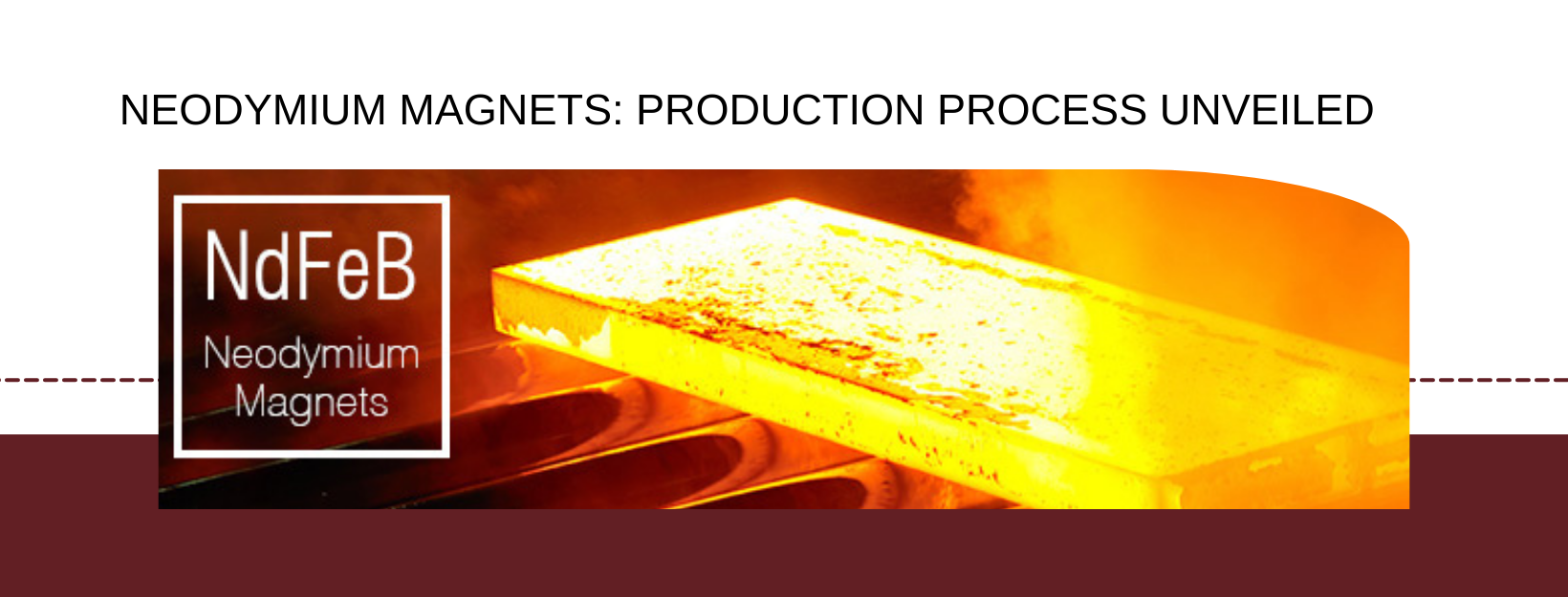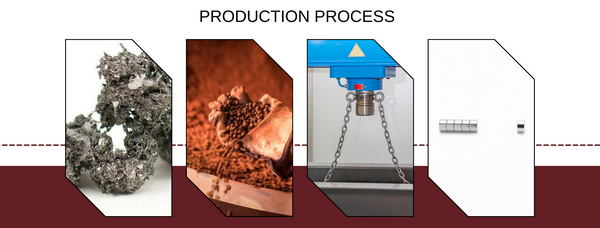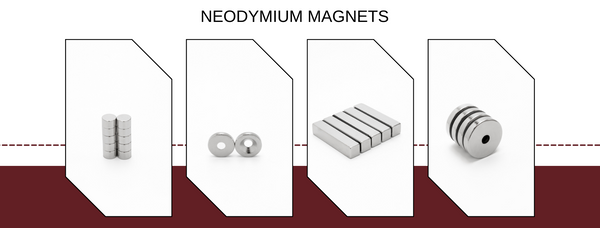
Neodymium (Nd), an extraordinary, rare-earth element with an atomic number of 60, entered the scientific stage in 1885 when Austrian chemist Carl Auer von Welsbach first discovered it. Despite its affiliation with the rare earth family, neodymium is anything but scarce, boasting a relative abundance comparable to that of copper. The true wonder lies in the alloy it forms when combined with iron, boron, and trace elements like dysprosium and praseodymium—a ferromagnetic powerhouse known as Nd2Fe14b, the world's strongest magnetic material. This alloy, conceived in 1982 by General Motors and Sumitomo Special Metals, serves as the foundation for the global neodymium magnets revolutionising modern commercial and industrial applications.

Production Process:
1. Mining and Extraction:
Neodymium is typically mined from ores containing rare-earth elements. Once extracted, it undergoes a refining process to obtain pure neodymium oxide.
2. Alloy Preparation:
Neodymium, iron, and boron are carefully measured and mixed in precise proportions. This mixture is then subjected to a high-temperature process, resulting in a fine powder.
3. Pressing:
A hydraulic press compacts the powder into the desired shape. This step is crucial for determining the magnet's final geometry.
4. Sintering:
The compacted powder is exposed to high temperatures (over 1000°C) in a sintering furnace. The powder particles fuse during this phase, forming a solid piece with magnetic properties.
5. Machining:
The sintered magnet undergoes precision machining to achieve the final shape and dimensions. This step demands accuracy to ensure the magnet meets the required specifications.
6. Coating:
Neodymium magnets are often coated with a protective layer to prevent corrosion.
Quality Control:
Stringent quality control measures are implemented throughout production to ensure the magnets meet industry standards. Factors such as magnetic strength, dimensions, and coating integrity are carefully assessed.

Neodymium magnets emerge from this intricate process as the powerhouses of the magnet world. Their exceptional power-to-volume and weight ratios make them stand out, offering a cost-effective solution in terms of Maximum Energy Product (MGOe). While their resistance to demagnetisation is impressive, it's essential to note that neodymium magnets have relatively lower maximum operating temperatures compared to alternative materials. Additionally, their susceptibility to corrosion underscores the importance of maintaining the integrity of their protective coatings.
The journey from neodymium's discovery to the creation of its magnetic marvels is a testament to human ingenuity and scientific precision. These neodymium magnets, born from a fusion of rare earth elements and modern manufacturing prowess, have become indispensable in countless applications. As technology advances, the allure of neodymium magnets persists, ensuring their continued dominance in industries seeking powerful and compact magnetic solutions.

